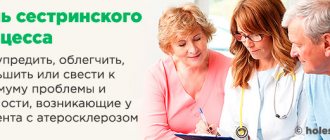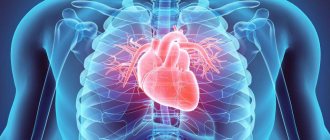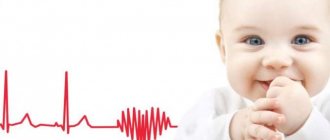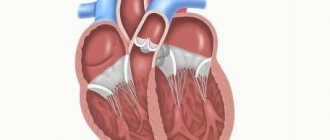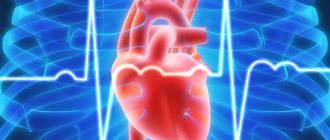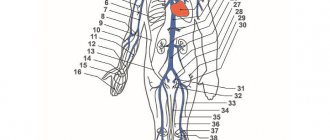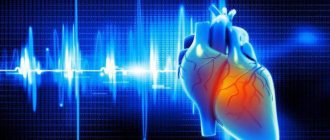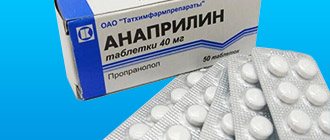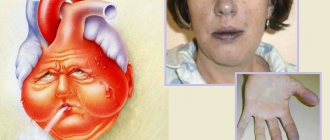A state of discomfort, as well as pain in the chest, appearing immediately after physical exercise. load or during stressful situations - all these are signs of angina pectoris. Often this also causes instability of the pulse. Seizures usually occur unexpectedly. Pain is felt in the cervical region, chin, area between the shoulder blades, as well as the left shoulder. They do not last too long (about a quarter of an hour) and are removed with nitrate agents.
For the purpose of prevention and to prevent the development of painful attacks, special exercises for angina pectoris are prescribed. The complex can also help relieve pain without pills. Initially, such exercises are performed by patients in a hospital under the guidance of a health care worker. In the future, classes take place without the help of a doctor.
Relevance and Benefits of Breathing and Exercise Exercises for Heart Attacks
Non-drug therapy methods for angina pectoris are aimed primarily at preventing the development of ischemia. In this case, the patient’s usual lifestyle should be changed. Firstly, you should give up bad habits - drinking alcohol and tobacco products. Because it will help strengthen the heart muscle thanks to the respiratory system.
It is worth following a diet for cardiovascular diseases. The diet should reduce the amount of table salt, and also completely remove the following foods:
- fried;
- spicy;
- smoked.
In order to reduce discomfort and improve the patient’s well-being, a variety of therapy methods are used.
For patients with angina pectoris, feasible physical activity is also recommended. As a result, cardiac and respiratory work can be started. Combining gymnastic and breathing exercises will help improve the functioning of the circulatory system and metabolic processes, and also relieve pain attacks.
Therapeutic gymnastics exercises for coronary heart disease
Coronary heart disease (CHD) is a serious disease that requires immediate treatment. Very often, one dose of medication is not enough for a complete recovery, so the attending physician prescribes his patients a specialized set of exercises that will help improve the patient’s well-being and overcome the disease - therapeutic exercises for coronary artery disease. During exercise, blood circulation is normalized, the respiratory and cardiovascular systems return to normal. It is important that doing gymnastics for coronary heart disease helps cope with stress, emotional experiences and strengthen the body. With correctly selected and dosed exercises, you can significantly improve your health.
Are there any restrictions for physical education?
An important task during angina attacks is to control the pressure from its sudden changes, as well as to prevent the development of hypertension. That is why you need to make sure that there is no overload, both physically and emotionally. In addition, you should not drink a lot of coffee or eat spicy and salty foods, as this can overstimulate the body and increase blood pressure. It is harmful to make sudden movements during angina, as the vessels are depleted. In almost all cases of this disease, sanatorium treatment is not prescribed.
Emergency care for angina pectoris
If a patient has obvious signs of an attack of the disease, then he needs first aid for angina, or rather, relief of an attack of angina.
- First you need to stop all work, physical or mental. The patient should be placed on a bed, or seated on a chair if it is not possible to lie down.
- Give tablets for angina pectoris. For example, put one nitroglycerin tablet under the tongue. Patients should carry medications for angina with them at all times. If a person does not feel better after three minutes, i.e. the symptoms of the disease do not disappear, then you need to take another pill.
- If the attack does not go away after fifteen minutes, then you should call an ambulance. Emergency medical intervention is necessary if new-onset angina occurs.
What should physical therapy be like?
To achieve good results, when prescribing exercise therapy for angina pectoris, a set of exercises is selected taking into account the patient’s condition. Gymnastics is allowed only in the first two stages of the disease. If the course of angina is severe, leisurely walks are needed, preferably in green areas.
Therapeutic physical training is one of the most effective means in the fight against angina pectoris
Physical therapy is prescribed in this way, for example:
- It takes into account what stage of development the disease is at, how long painful attacks last and how often they occur. With a mild form, the load may be more intense. In case of severe angina - minimal;
- the entire therapeutic complex of gymnastics consists of three components - warm-up, main part, cool-down. During the warm-up, the body is adjusted to accept the load. The main part of the exercises for angina pectoris is aimed at obtaining a reasonable load on all organs and systems of the patient’s body. During the cool-down, make a smooth exit from the set of exercises without jumps in blood pressure;
- the set of tasks should not contain exercises with sudden movements.
Is it possible to do physical exercise?
For angina pectoris, physical therapy is one of the methods of therapy, since it promotes the following processes:
- normalization of vascular reactions during muscular work;
- eliminating spasms in the cardiovascular system;
- improving the functioning of the excretory system.
At the same time, it is important to choose physical activity wisely so as not to worsen your well-being. It depends on the stage of the disease, which can be:
- Initial . The person experiences only slight discomfort, attacks occur very rarely and do not last long. It is recommended to exercise for no more than 30 minutes. The exercises can be quite intense. They help improve the functions of internal organs and develop all muscle groups.
- Typical . The patient experiences attacks during various physical activities. Pain can occur when climbing stairs, walking for a long time, as well as during stress and emotional overstrain. His general condition worsens, shortness of breath appears, and his heart rate increases. You can train for up to 20 minutes, but you must strictly monitor your heart rate. Perform exercises in a less strenuous mode, be sure to take breaks between them, during which to restore breathing and pulse.
If during exercise your heart rate changes by 15% or more, stop exercising or take a break and slow down.
- Pronounced . A person experiences pain even in a state of complete rest. You should avoid active activities and prolonged exercise. However, even at this stage it is allowed to perform physical therapy exercises. Classes last no longer than 15 minutes (they also include 5 minutes for a break between exercises). Do the exercises at a calm pace. If an attack develops, dizziness or shortness of breath occurs, you should immediately stop exercising and consult a doctor.
How to warm up
First of all, physical exercises for angina pectoris begin with a warm-up. To ensure that the load is not excessive, it is carried out lying on the floor (a gymnastic mat is laid out):
- Inhale and exhale deeply 3 times. This will give the mood for the whole complex.
- Sit on the carpet. Raise your left hand - lean to the right, do the same in the other direction. Repeat 10 bends in each direction. Rest for 1 minute, then do two more approaches.
- Lie down. Bend and straighten your knees 10 times. Rest 1 minute, then two sets.
It is important to choose the right set of exercises
Physical education for everyone: for children and adults
- Physical training
- Gymnastic exercises Jogging
- Chinese qigong gymnastics
- Strength exercises
- Exercises for pregnant women and the postpartum period
- Exercises for everyone
- Exercises for children
- Exercises and games for children
- Theory
- In pediatric surgery
- For gynecological diseases
- Acupressure
- Kinds of sports
The systematic use of strictly dosed physical exercises serves as an effective preventive measure to combat periodic attacks of angina pectoris.
Symptoms of angina
The main symptom of angina is pain, which has characteristic features:
- it is paroxysmal;
- by nature – pressing, squeezing;
- localized in the upper or middle part of the sternum;
- the pain radiates to the left arm;
- the pain increases gradually and quickly stops after taking nitroglycerin or eliminating the cause that caused it.
An attack of pain can be triggered by:
- brisk walking, climbing stairs, carrying heavy objects;
- increased blood pressure;
- cold;
- large meals;
- emotional stress.
- brisk walking, climbing stairs, carrying heavy objects;
- increased blood pressure;
- cold;
- large meals;
- emotional stress.
What does the main complex consist of?
The entire basic complex of physical therapy for angina pectoris is performed from a standing position.
The following exercises are done with a minute pause for rest:
- Sit down, stretching your arms in front of you (start with 10 squats, later increase the number to 30).
- I. p. – legs slightly apart. The body is parallel to the floor. Hands are spread to the sides. Perform turns left and right, stretching as far as possible. Initial quantity 10 times, increase to 50.
- I. p. – legs are shoulder-width apart. Raise one arm, bend in the opposite direction, do the same for the other arm. In each direction from 10 to 30 times.
- Slow running in place, gradually accelerating, 10 minutes. If you have a treadmill, you can do it on it.
Set of exercises
Cardiologists have developed a universal training complex for patients with the initial stage of angina. But even to use it, you need to consult with your doctor.
Execution Rules
It doesn’t matter what type of exercise was chosen for the whole body or just breathing, there are general rules for them, the observance of which is mandatory. Without following them, it is impossible to achieve the maximum positive effect:
- Inhale. It is carried out only through the nose and sharply and quickly.
- Exhale through the mouth, but slowly and measuredly. In this case, the released air should not be accompanied by any sounds.
- You need to breathe correctly both during exercise and during the rest period after it.
- Breathing exercises for angina pectoris should be combined with counting, but not done out loud, as breathing becomes difficult.
- When performing exercises, you need to feel comfortable and comfortable.
- Training should be divided into two stages - morning and evening, the last 2-3 hours before going to bed.
- Any technique should be carried out only on an empty stomach.
- It is better to exercise outdoors, this will make the workout more effective.
- If you can't walk around the park, you can use a treadmill or walking in place.
- Before starting training, it is important to ventilate the room and do a damp cleaning.
Also read: How to normalize blood pressure with massage
Warm-up
It helps the body prepare for future stress and make it useful. To do this, you need to stand straight, feet shoulder-width apart. Tilt your torso on all sides alternately. Do this slowly, without lowering your head. Carry out 10 such manipulations.
Now, from the starting position, raise your arms above your head and stretch upward for 10 such pull-ups. Take a lying position and spread your limbs in different directions, alternately squeezing your fingers, first on your hands, then on your toes. The intensity is average, only 5 times. At the same time, we monitor our breathing so that the heartbeat remains normal. Afterwards, turn your feet inward, then outward. Also 5 times for each movement.
Main part
From a lying position, you need to pull your shoulders up as much as possible, trying to touch your ears. Do this at a slow and steady pace 5 times. Then bend your limbs and twist them in different directions. Each limb should make 5 circles. Take the starting position and do a bridge, but without lifting your lower back from the floor, only 3 approaches at a slow pace. Finish the main part by raising your bent knees to the sides.
Hitch
She completes the training and consolidates the achieved effect. It is best to walk in place at a slow pace. For beginners, a couple of minutes is enough, but it is recommended to add 30 seconds daily to improve your well-being. However, the best duration of walking will be determined by your doctor.
How to finish gymnastics with angina pectoris
The cool-down is done while sitting on the floor. Keep your legs straight, do not bend your knees. Hands reach to the tips of the toes. Try to reach your knee with your head. Don't rush, do it slowly. Lie down, rest, and restore your breathing.
When performing physical exercises with angina, it is important not to overdo it. At the slightest discomfort in the heart area, you need to stop. Also lie down and try to take deep breaths in and out to normalize your breathing.
If this method does not help, you should take drugs from the nitrate group “Nitroglycerin” or “Sidnopharm”.
The duration of the workout should not be more than 10-15 minutes
Exercise therapy and risk groups
It should be noted that certain groups of people should be especially sensitive to the choice of physical exercises and methods of restoring breathing, since in some cases, despite the fact that they are prescribed to combat angina, they can cause damage to other organs and the entire body.
These groups include:
- women during pregnancy and lactation;
- people during periods of exacerbation of chronic diseases;
- people with inflammatory diseases in the pelvic area;
- women diagnosed with adenomyosis (uterine disease).
Attacks of angina pectoris are treated, including with the help of special gymnastics, which is also a good preventive measure. Therapeutic exercise or exercise therapy helps the body gradually get used to physical activity, resulting in improved blood circulation and metabolism.
Breathing according to Strelnikova
There is a wide variety of breathing exercises in this system. There are also exercises that allow you to get rid of them in emergency situations during severe angina attacks.
An equally effective type of therapy is breathing exercises for angina pectoris.
Here are some of them:
- Sit on a chair or kneel on the floor, eyes closed.
- Inhale sharply to compress the chest muscles.
- Do not hold your breath, but immediately exhale slowly.
- Continue inhaling and exhaling until the pain stops.
After the attack ends, the patient needs rest. If the pain does not subside, you need to call an ambulance.
Symptoms of the disease
Pain is the most important symptom of the disease.
- Nature of pain.
It may have a pressing, squeezing character. Some people constantly have something drilling or pulling in their chest. But such signs of angina are less common. It's just that every person has their own pain threshold. For some people this pain is very severe. And in another patient, the medical history of exertional angina does not indicate pain at all, i.e. a person does not mistake his sensations for pain. He only complains that something is pressing or suffocating him in his chest.
- Pain intensity.
The same applies to the intensity of manifestation of these symptoms. It all depends on the degree of development of the disease, its type and on the patient’s attitude towards pain and the disease in general.
- Localization.
As for the localization of pain, the patient mainly feels it behind the sternum. Sometimes it can be, so to speak, under the spoon. This symptom is also a sign of ulcers and diseases of the duodenum. The pain of angina radiates. A person may have pain in his left arm, left ear, left shoulder, etc. That is, the entire left side of the body.
Breathing according to Bubnovsky
This technique involves breathing in which the diaphragm is involved, and chest breathing is reduced to a minimum. You need to know that many medical specialists point out the dangers of chest breathing.
An approximate set of breathing exercises:
- Sit on your knees, close your eyes, feel the diaphragm - the area in the middle of the peritoneum and chest.
- Inhale slowly for a count of five, gradually increasing your diaphragm and tensing your muscles. Freeze, count to three, fixing this state of the diaphragm. Exhale gradually, counting to 5. Retract the diaphragm using muscle force. Perform – starting with 20 breaths and working up to 50.
- Get on all fours, relax your abdominal muscles. Make breathing movements with effort and quickly for one minute. In the future, increase the duration to 10 minutes.
If severe dizziness is observed, breathing exercises should be interrupted. Next time start with small doses.
There are several types of breathing exercises
Breathing exercises
There are many techniques for this gymnastics. They have a positive effect on the entire body. For people with angina pectoris, they are mandatory, because they help avoid oxygen starvation.
Purpose of execution
This gymnastics is based on the following tasks:
- strengthen and increase the tone of the diaphragm;
- saturate the myocardium with oxygen;
- make breathing correct;
- stabilize metabolism;
- improve well-being;
- increase immunity;
- normalize emotional state;
- normalize your heartbeat.
Methods used
Most often, doctors recommend using techniques developed by the following specialists for breathing exercises:
Strelnikova. This is a set of exercises with moderate intensity that helps relieve an emergency attack of angina:
- while sitting on a chair or kneeling, close your eyes;
- take a rather sharp breath, strongly squeezing the muscles of the sternum;
- Without holding your breath, smoothly push out the air;
- breathe at this pace until improvement occurs, if you do not feel better within 10 minutes, urgently call an ambulance.
Bubnovsky, who focuses on the diaphragm while minimizing chest breathing. Many doctors do not support this technique, considering it dangerous. To implement it you need:
- sit on your knees, close your eyes and feel the diaphragm work;
- inhale slowly, count to 5 and expand the diaphragm to push out the air;
- hold your breath for a count of 3, keeping your diaphragm widened;
- exhale slowly, drawing in the diaphragm with your muscles, repeating the procedure 20-30 times;
- after, take a dog pose, relax your stomach and breathe intensively for at least 5-10 minutes.
Buteyko, who calls for reducing the breathing rate, increasing its quality. At the same time, you need to take no more than 16 inhalations and exhalations per minute, using only your nose, since mouth breathing, in his opinion, is harmful. The process should be slow and even, holding your breath after inhaling.
Also, many cardiologists recommend the following techniques to their patients:
- Bodyflex, which, in addition to physical activity, also increases breathing. It is carried out in stages, which will completely saturate the entire body with oxygen. The technique is useful not only for angina pectoris, but also for weight loss.
- Oxysize performed simultaneously with physical exercise. This leads to an increase in the breathing rhythm, and therefore to maximum saturation of the body with oxygen.
- Jianfei from Chinese healers, consisting of the same lotus, waves, available to everyone. Effective both for coronary artery disease and for combating fat and bad mood. You should not start with complex exercises that only experienced people can do. But this does not mean that there is no need to increase the load, because this is the only way to get the maximum effect and improve the health of the body. It is advisable to practice under the supervision of a specialist, especially in initial classes.
Breathing according to Buteyko
The main principle of the Buteyko breathing technique is to reduce the frequency of respiratory movements while increasing the quality of the respiratory process.
The main positions when performing breathing are the following:
- the number of inhalations and exhalations cannot be more than 16;
- You need to breathe strictly through your nose. Breathing through the mouth is not only harmful, but also poses a danger to humans;
- you need to breathe slowly and naturally;
- you need to inhale twice as long as you exhale;
- After inhalation, a delay should be performed.
An approximate set of Buteyko exercises:
- Sit on a chair with your eyes closed, keep your back straight, and place your hands on your knees.
- Inhale for 10 seconds, hold your breath for 20 seconds, then exhale for 20 seconds. It will not be possible to complete such a period of time from the first lessons. The main thing is to maintain the 1x2x2 proportions and feel comfortable.
The Buteyko breathing technique is a step-by-step transition to light breathing according to the following scheme: inhale – pause – deep exhale. There should be no tension felt.
Exercise therapy for ischemic heart disease: features, indications and contraindications, standard set of exercises
IHD is treated with medications or surgery. But physical gymnastics also has a healing effect. For patients, doctors select a special complex of exercise therapy, which has a therapeutic effect and prevents complications. Gymnastics for coronary heart disease helps eliminate the consequences of heart disease:
- improves blood pressure;
- strengthens the immune system;
- normalizes hormonal levels;
- improves heart function;
- normalizes myocardial functions;
- reduces cholesterol in the blood;
- eliminates tachycardia;
- prevents the development of atherosclerosis.
Patients should perform exercise therapy daily.
For each patient, a cardiologist and a rehabilitation specialist develop a special complex.
The main goal of exercise therapy for ischemia is to restore the functioning of the cardiovascular system. Also, training improves the patient’s immunity and well-being.
Complex exercise therapy for diseases of the cardiovascular system
In the 21st century, medicine has reached its highest development and is successfully coping with many ailments.
However, the number of people with problems of the cardiovascular system is not decreasing, and heart diseases such as ischemia, angina, and myocardial infarction still rank high on the list of the most common diseases.
And the most surprising thing is that physical therapy for diseases of the cardiovascular system still remains one of the most effective methods of their prevention and treatment.
Monitoring the patient and monitoring the results
In the treatment of cardiac pathology, a key role belongs to drug therapy and surgical interventions. In addition, the importance of preventive measures cannot be underestimated: rational nutrition, avoidance of bad habits. And in no case do they forget about the importance and healing properties of physical activity.
With cardiac rehabilitation:
- blood pressure levels are normalized;
- the efficiency of the heart increases;
- myocardial trophism improves;
- immunity is strengthened;
- con increases;
- the level of cholesterol, triglycerides and blood glucose decreases;
- the frequency of heart attacks decreases.
Recently, American scientists have proven the fact of the reverse development of atherosclerotic changes when performing physical activity.
And although the experiments were carried out exclusively on animals and in the future the value of this theory in relation to humans may be refuted, today it is stated with 100% probability that regular physical activity slows down the rate of the atherosclerotic process.
Exercise therapy should become a daily norm of life for patients with cardiovascular pathology. However, you cannot practice on your own and uncontrollably. In each case, you need your own training program and a specially designed set of exercises. That’s why this type of recovery is prescribed by a cardiologist or rehabilitation specialist.
Exercises and rehabilitation methods are prescribed by the attending doctor. He is responsible for their appropriateness and necessity.
Classes are prescribed below the level of threshold loads for the patient, and at the same time they are with the maximum possible effect of stress and training of the heart. The most important criterion for dosing physical effort is heart rate. Changes in heart rate most quickly and accurately reflect the work of the heart and the adequacy of the load being performed.
The rehabilitation program for patients with coronary heart disease lasts approximately one year. If no complications arise during this period, more complex exercises are prescribed. Additionally, some patients are recommended cycling, working out in the gym, and skiing.
Be sure to remember that even with correctly selected treatment and its effectiveness, constant medical monitoring of the patients’ condition and preventive examinations every two to three months are necessary. The exact frequency is determined by the attending physician.
Methods for preventing CVD
To ensure that the number of CVDs does not increase every year, doctors strongly promote a healthy and proper lifestyle. Prevention for the heart and blood vessels is taking care of yourself and your body. Move more, eat vegetables and fruits, give up bad habits, and your heart and blood vessels will remain healthy for a long time.
In the fight against cardiovascular diseases, doctors use many new and effective medications. Diagnostic and treatment equipment is being improved. And yet, simple and accessible exercise therapy complexes remain an indispensable aid in achieving positive results and maintaining the performance of our main organ.
Can yoga replace breathing exercises?
There are many similarities and similarities between the breathing techniques created by Bubnovsky and Buteyko and the breathing exercises of yogis. This is especially true for the technique that follows the scheme: inhale – pause – exhale. But yoga is not designed for people suffering from heart disease.
Yogis use more rigorous exercises. They cannot be used for angina pectoris. Yogi breathing exercises have not yet been studied enough at the official medical level, which is why patients with angina pectoris should refrain from using it.
Contraindications to performing physical and breathing exercises
During an attack of angina, breathing exercises are effective and have no side effects, but there are people who cannot perform them, because for them it is contraindicated. These include:
- pregnant and lactating women;
- persons diagnosed with exacerbation of chronic pathology of any origin;
- with an inflammatory process in the small and large pelvis;
- patients with adenomyosis.
Even for people not included in this list, it would be a good idea to consult a doctor to select the right method of physical and breathing exercises. This will reduce negative risks and help achieve a positive effect.
Exercise therapy for angina pectoris: a list of effective exercises for prevention
Additional education:
"Emergency Cardiology"
1990 – Ryazan Medical Institute named after Academician I.P. Pavlova
Contacts
Diseases of the heart muscle and the heart itself are quite dangerous for everyone’s health. They significantly worsen the quality of life, make a person less active, cause discomfort and severe pain. In case of heart disease, the patient must comply with a large number of rules, requirements and restrictions.
The current trend is that not only people of retirement age suffer from such ailments, as was the case several decades ago. Heart and myocardial diseases are quite common among young people.
The main reason for this phenomenon is the low level of the number of children and adolescents involved in sports, their inactive lifestyle and nutrition with low-quality, completely unhealthy foods high in sugar, animal fat, “bad” cholesterol, etc.
Angina pectoris is a consequence of ischemia. It manifests itself in frequent and fairly prolonged pain attacks. In order to reduce discomfort and improve the patient’s well-being, a variety of therapy methods are used. One of them includes exercise therapy for angina pectoris.
The nature of the loads during angina pectoris
Therapeutic physical training is one of the most effective means in the fight against angina pectoris. Low activity with this disease can only worsen the patient’s condition. But it is important to choose the right set of exercises. This largely depends on the degree of development of the disease. It is worth considering the nature of the loads at each stage of angina.
Diagnosis of the disease and selection of the necessary therapy for its treatment should be carried out by a professional cardiologist. Do not try to choose a course of treatment on your own; this may not only be ineffective, but also dangerous for your health.
initial stage
At this stage of angina, patients experience virtually no discomfort or pain. The disease manifests itself quite rarely, attacks are usually short-lived.
At this stage, exercises for angina pectoris should last about 25-30 minutes. They can be intense and dynamic, but without high stress on the heart. A set of exercises is selected that allows you to engage and develop all muscle groups and improve the tone of internal organs.
Typical stage
The typical stage appears only during physical activity of the patient. When walking for a long time, climbing stairs, or performing intense workouts, symptoms such as shortness of breath, dizziness, increased heart rate, etc. may appear. Deterioration of the condition is also observed under stress and emotional overstrain.
At a typical stage of development of angina pectoris, the patient is allowed to engage in physical activity, but all exercises should be performed in a less intense mode. Between approaches it is necessary to take breaks, during which it is worth normalizing breathing and heart rate.
The duration of the complex should not be more than 15-20 minutes. During it, the patient must carefully monitor the pulse rate. If it changes by more than 15%, you should stop the complex or reduce the intensity.
Sharply expressed stage
The sharply expressed stage is the most acute of all those presented above. The patient may feel discomfort even in a state of complete rest. Such a patient should be limited from high-intensity physical exertion and prolonged types of activity.
But even with a pronounced stage, the patient can be prescribed exercise therapy. All exercises should be performed calmly. If they are difficult and cause shortness of breath, dizziness, pain in the heart, then you should rest a little and reduce the amplitude of execution.
The duration of the workout should not be more than 10-15 minutes. Of these, approximately 5 minutes are allocated for rest between exercises.
When the first symptoms of an attack appear, you should immediately stop training and contact a specialist.
Objectives of breathing exercises for angina pectoris
Breathing exercises have several tasks. Among them are:
- Strengthening and increasing the tone of the diaphragm.
- Saturation of the myocardium with oxygen.
- Correct breathing.
- Stabilization of metabolism.
- Feeling better.
- Increasing immunity to various viral diseases.
- Normalization of the emotional background.
- Stabilization of heartbeat.
Varieties
There are several types of breathing exercises. They differ from each other in the technique of execution and the place of occurrence. The following varieties are distinguished:
- Bodyflex. This method is actively used between the main exercises of therapeutic physical culture. Bodyflex is performed in several stages. It is aimed at saturating oxygen not just an individual organ, but the entire organism. This method is used to get rid of a wide variety of ailments - from extra pounds to cardiovascular diseases.
- Oxysize. It is used during physical exercise. The breathing rhythm increases, which allows you to saturate the body with oxygen as much as possible.
- Jianfei. The birthplace of this technique is China. It includes several types of exercises (“lotus”, “wave”, etc.) that anyone can do. This technique is used both for cardiovascular diseases and to improve well-being and get rid of extra pounds in problem areas.
Contraindications
Breathing exercises during attacks are a very effective and efficient therapy that has virtually no side effects. But there is also a group of people who should give it up. These people include:
- Nursing women.
- Women who are carrying a child.
- Persons with acute forms of chronic illness.
- Patients with inflammatory diseases of the large or small pelvis.
- Patients suffering from adenomyosis.
Additional physical activity and breathing exercises will help get rid of the causes and symptoms of angina, significantly improve the patient’s condition and well-being, and normalize the functioning of all organs. But such treatment should be selected with specialists.
Source: https://CardioPlanet.ru/zabolevaniya/ishemiya/lfk-pri-stenokardii
Just what the doctor ordered: exercise for angina
Civilization forced man to put on clothes and use a fork. Civilization brought water, electricity and gas to homes, reducing the share of heavy manual labor and increasing the amount of payments for utilities. Civilization has given its diseases (diseases of civilization), including angina pectoris, heart attack, hypertension.
Less movement - more illness - doctors divide patients with angina into four functional classes:
• first functional class – heart pain occurs with excessive physical exertion, everyday household activities are well tolerated;
• second functional class – there is a limitation of usual physical activity, angina attacks occur when walking at a usual pace for a distance of more than 200 m, climbing more than one floor on the stairs;
